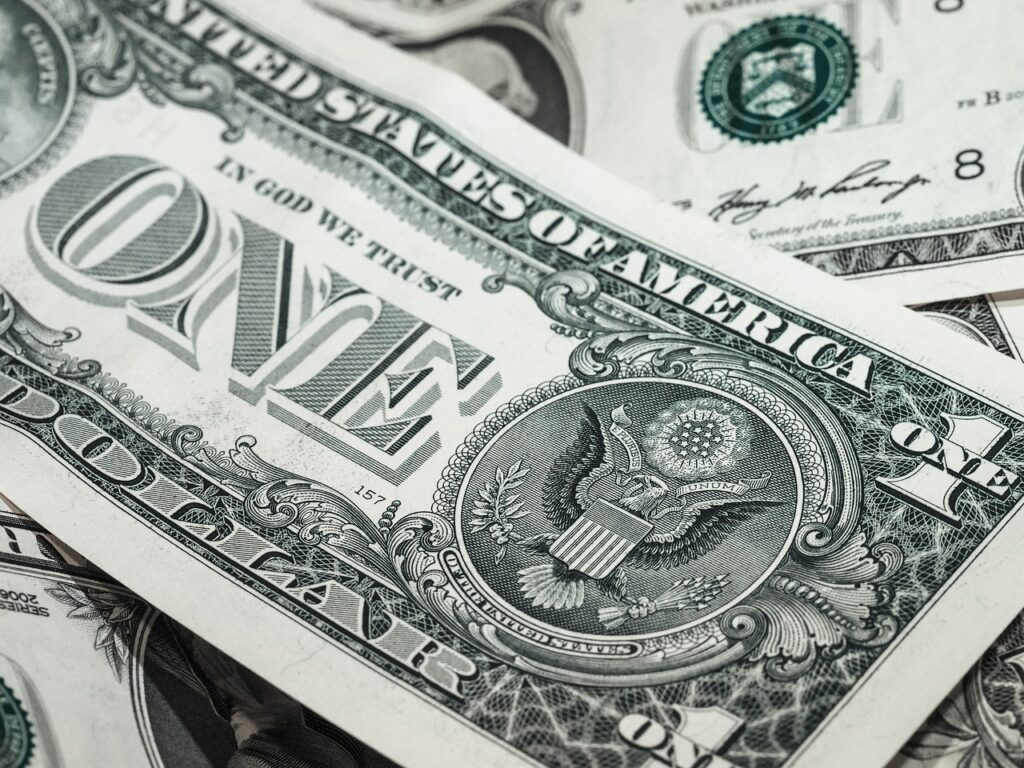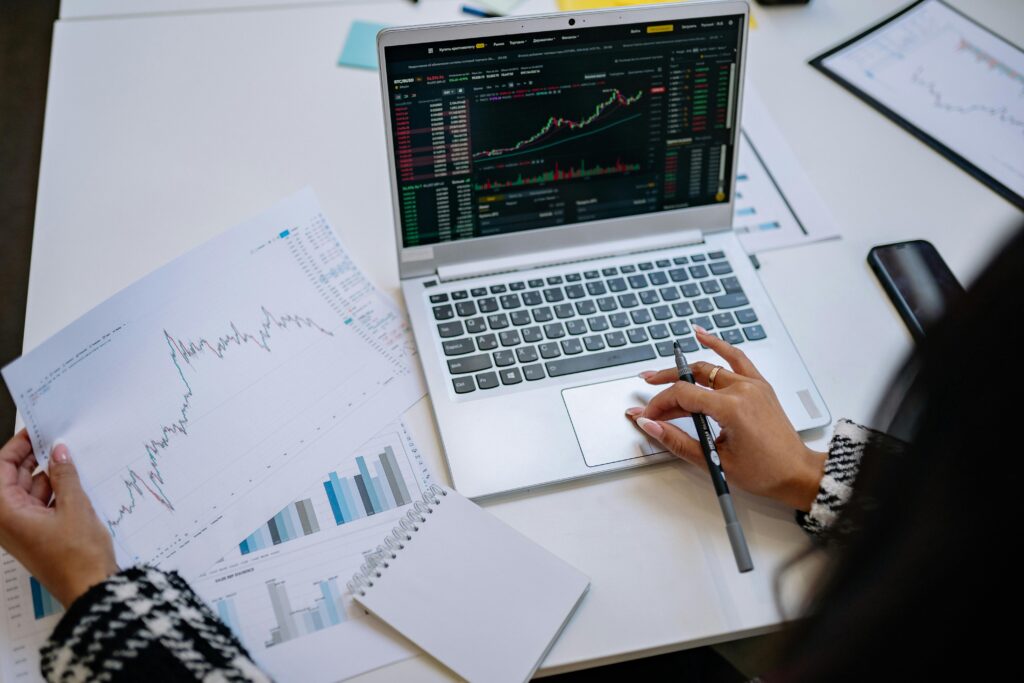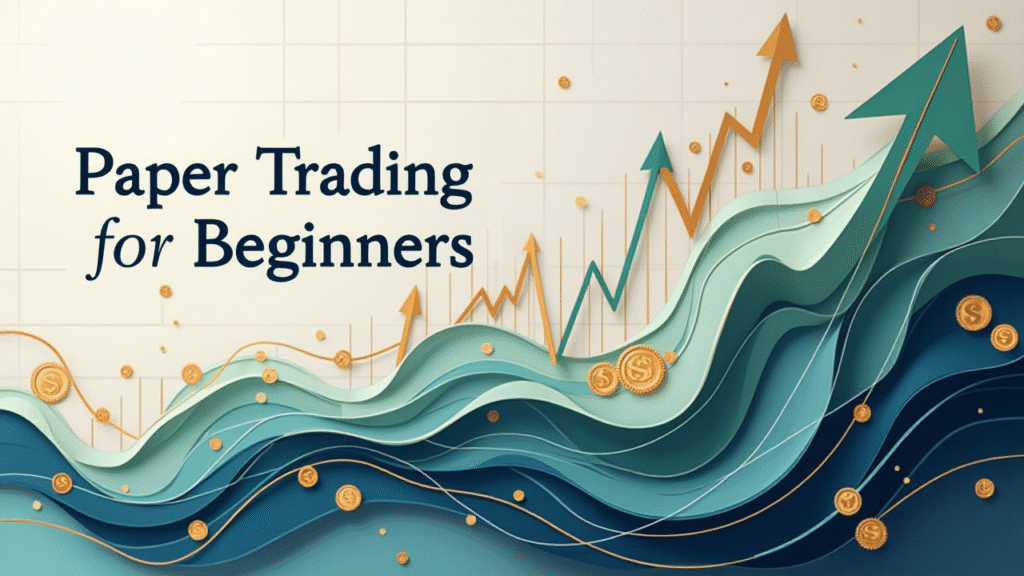“Practice doesn’t make perfect. It makes you prepared.”
That’s what paper trading does. It gives beginners a risk-free sandbox to make mistakes, learn patterns, and build emotional discipline before real money is involved.
If you’re just starting out and wondering how to trade stocks or forex without burning your capital, this is your safe place to start.
In this guide, you’ll learn what paper trading is, why it matters, and how to use it to become a confident trader.
What Is Paper Trading?
Paper trading means simulating trades with fake money on real-time market data.
You buy and sell stocks, forex pairs, or crypto just like in the real world. But none of your money is actually at risk.
Think of it like a flight simulator for traders. You learn the cockpit before flying a real plane.
Why Paper Trading Matters for Beginners
- Zero Risk – You can make mistakes without losing money
- Real Experience – You learn how charts, price action, and orders work
- Builds Emotional Control – Helps you develop emotional discipline
- Strategy Testing – Try swing trading, scalping, or long-term holding
- Confidence Boost – You enter real trades with clarity, not fear
“You don’t rise to the level of your goals. You fall to the level of your preparation.” — James Clear

Step-by-Step: How to Start Paper Trading
1. Choose a Paper Trading Platform
Pick a platform with real-time data, intuitive UI, and demo accounts.
Popular options:
- TradingView (free, real-time charts + paper trading)
- Thinkorswim by TD Ameritrade
- Webull
- Investopedia Simulator
2. Set a Realistic Account Balance
Don’t start with fake $1 million.
Start with what you’ll realistically trade: $1000 to $5000.
This keeps your risk mindset grounded.
3. Pick a Market and Trading Style
- Day trading? Practice quick in/out moves.
- Swing trading? Simulate holding for days/weeks.
- Long-term investing? Watch trends and news.
Start small. Focus on one stock or pair.
4. Record Every Trade You Make
Use a trading journal to log:
- Entry/exit price
- Why you entered
- What went right/wrong
- Emotions during the trade
This is how you build self-awareness, not just skill.
Reborn Trading Journal – Track & Elevate Your Trades

5. Review Weekly. Adjust. Repeat.
Ask:
- Am I overtrading?
- Are my entries based on strategy or emotion?
- How often am I revenge trading?
- Am I following risk rules?
Your answers = your growth.
Read this: Trading Journal Mastery for Ultimate Traders
The Hidden Benefit: Emotional Discipline
Real traders aren’t just skilled, they’re emotionally tough.
Paper trading helps you develop:
- Patience to wait for setups
- Detachment from outcomes
- Clarity in the chaos of the market
This is where beginners start becoming professionals. Not by chasing profits but by mastering behaviour.
“In trading, your biggest enemy is rarely the market. It’s often your mind.”
Paper Trading Tips for Beginners
Don’t treat it like a game. Simulate serious trades.
Avoid randomly clicking “Buy” or “Sell.” Follow a strategy.
Use stop-loss and risk management, just like real money.
Compare your paper results with real market conditions.
Trade the same time each day. Build consistency.
Also read this: Emotional Discipline in Trading: How to Stay Calm During Drawdowns
Mistakes to Avoid in Paper Trading
- Unrealistic account sizes – Stay grounded in real-world numbers
- Ignoring risk management – Always use stop-loss and position sizing
- Chasing trades without logic – Every entry must have a reason
- Skipping journaling – You can’t improve what you don’t track
- Staying too long in simulation – After 30–90 days, test with small real capital
When to Switch From Paper to Real Trading
Start real trading when:
- You’ve followed a trading plan for 30+ days
- You’ve journaled at least 20–30 trades
- You’re consistent not perfect
- You’ve handled drawdowns without panic
- You’ve built emotional discipline
Then, start with micro or fractional positions. Keep learning. Gradually grow.
Final Thought: Don’t Just Paper Trade. Practice Thinking
Paper trading isn’t just about technical skills.
It’s about thinking clearly under pressure.
If you can control your impulses in a fake environment, you’re more likely to survive in the real one.
Take it seriously. Journal your emotions. Refine your system. And remember:
“The best traders aren’t the ones who always win. They’re the ones who never stop learning.”

FAQs
What is the best platform for paper trading?
TradingView and Thinkorswim are among the best for real-time paper trading. Investopedia is good for beginners wanting to simulate portfolios.
How long should I paper trade before using real money?
At least 1–3 months, depending on your learning curve. The goal is to build confidence, not perfection.
Can I make real money with paper trading?
No, it’s simulated. But the skills you gain can help you make money when you go live.
